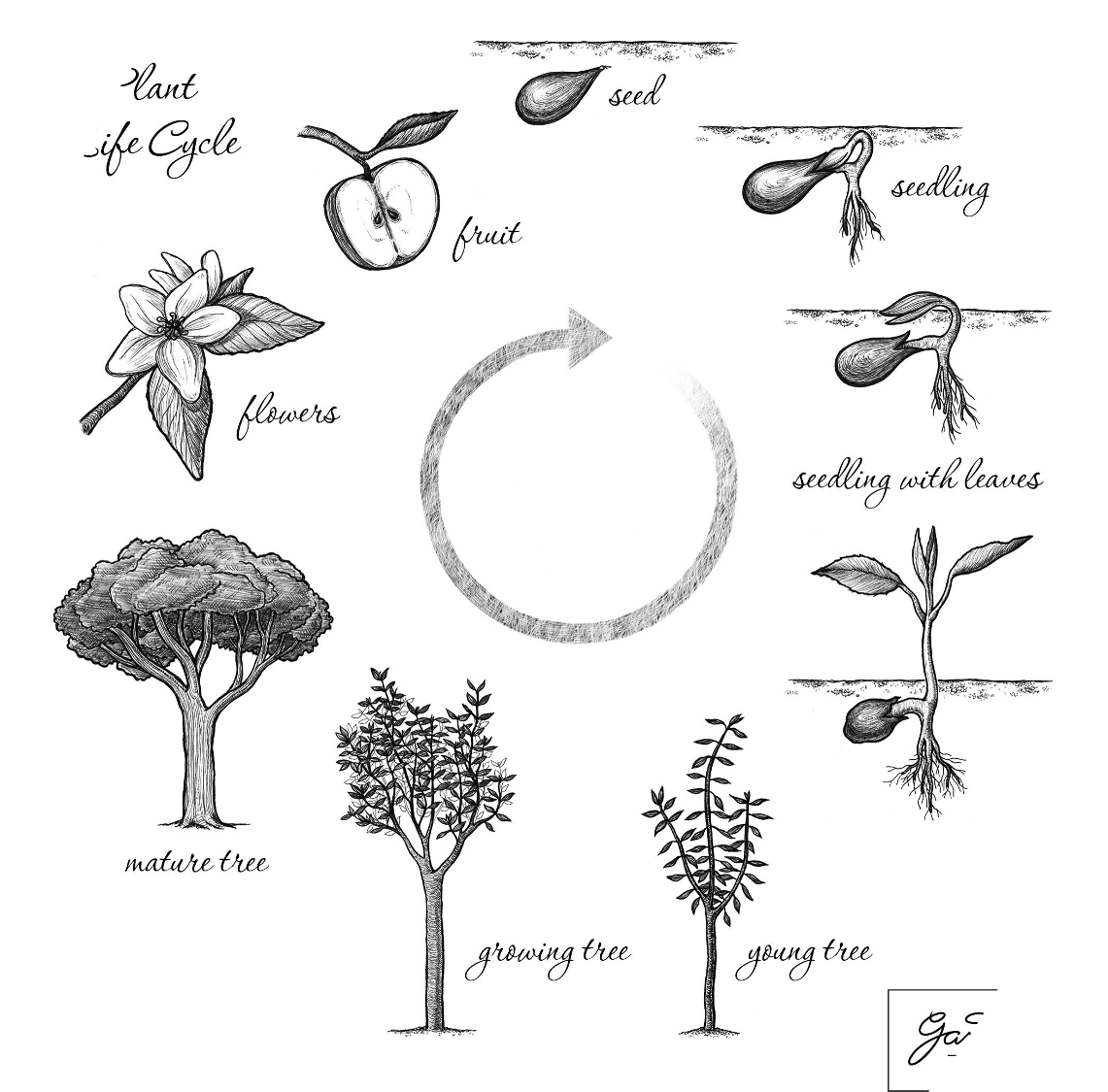59 Life Cycles of Plants
Plants are classified by the number of growing seasons required to complete a life cycle.
- Annuals pass through their entire life cycle from seed germination to seed production in one growing season and then die.
- Biennials are plants which start from seeds and produce vegetative structures and food storage organs the first season. During the first winter a hardy evergreen rosette of basal leaves persists. During the second season flowers, fruit, and seeds develop to complete the life cycle. The plant then dies. Carrots, beets, cabbage, celery, and onions are biennial plants. Hollyhock, Canterbury Bells, and Sweet William are biennials which are commonly grown for their attractive flowers.
- Plants which typically develop as biennials may, in some cases, complete the cycle of growth from seed germination to seed production in only one growing season. This situation occurs when drought, variations in temperature or other climatic conditions are experienced. These cause the plant to physiologically pass through the equivalent of two growing seasons, in a single growing season. This phenomenon is referred to as bolting.
- Perennial plants live for many years, and after reaching maturity, typically produce flowers and seeds each year. Perennials are classified as herbaceous if the top dies back to the ground each winter and new stems grow from the roots each spring. They are classified as woody if the top persists, as in shrubs or trees.
- Ephemeral plants are plants which have a very finite life cycle, meaning they complete their life cycle in less than one year, more likely to be 8-12 weeks.
Life cycles
The annual plant dies after producing seeds.

The perennial plant flowers and fruits continually over a period of years.

